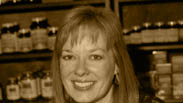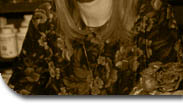(50)
As described by Judith
R. Schmal (June 7, 1977) the method
used from November
1971 to February 1, 1974 was adapted
from Fermco Kit Bulletins
#20 and 20-1. Urea is hydrolyzed
to ammonia and carbonic
acid in the presence of urease.
Ammonia is detected
by the Berthelot reaction to produce
indophenol. From
February 1, 1974 the "direct serum
methond"
modified from the
method of Marsh et al was used.
4) Phenylalanine
Reference: Hill,
J. B., Summer, G. K. Pencer, M. W. Resz
N.O. (1965) Chin
Chem 11, 541
From Nov. 1971 to
about Septembe 1972 there is no documenta-
tion in file as to
method used. From about September 1972
the method used was
a flurometric determination in the pre-
sence of ninhydrin
and l-leucyl-l-alanine as adapted from
McCaman and Rubins.
(This is a manual method modified for
automation by Hill
et al - reverenced above) (Judith R.
Schmal, June 7, 1977)
5) Calcium:
Reference Pybus J.,
(Pylrus in submission), Feldman, F. J.,
and Browers (Borrers
in Submission) Jr., G. N. (1970) Clin.
Chem. 16 (11 in submission),
998.
The referenced method
involves the measurement of total cal-
cium in serum by
atomic absorption spectrophotometry. As
described by Judith
R. Schmal (June 7, 1977) from November,
1961 to February
1974 the procedure used was a colorimetric
procedure using Corinth
dye as adapted from Kingsley and
Robnet. From May
21, 1973 the method used was atomic absorp-
tion spectrophotometry,
as adapted from Pybus et all
(reference above)
6) Total Cholesterol
Reference: Levine
J. S., Morgenstern, S., and Vlastelica,
D. (1968). Automation
Anal Chem. pp 25-28, Technicon
Symposia 1968.
We were unable to
check the above reference because of diffi-
culty up to now in
obtaining a copy of the publication, but
as
shown below two different
procedures were employed to measure
total serum cholesterol
at different times during the study.
(51)
(Judith R. Schmal,
June 7, 1977). From November 1971 to
July 2, 1973 the
method involved reacting an isopropanol
extract of serum
with ferric chloride (modified from Block,
Tirret and Levine).
From July 2, 1973 the method used was
a
direct serum method
using a modified Lieberman - Burchard
reaction.
7) Glucose
Reference: Frings,
C.S., Ratliff, C.R. and Dunn, R.T.
(1969) Advances in
Automated Analysis 1, 73
This reference was
not checked (because of difficulty up
to now in obtaining
a copy of the publication) but as shown
below two different
procedures were employed to measure
serum glucose at
different times during the study (Judith
R. Schmal, June 7,
1977).
From November 1971
to October 16, 1972 the method was a
glucose oxidase determination
(modified Gertrud Acrow)
using protein free
filtrates. From October 16, 1972 the
method was a direct
serum O-Toluidine reaction as modi-
fied from Frings,
Ratlif and Dunn.
In the case of four
of the above parameters (glutamic pyruvic
transaminase, glutamic
oxaloacetic transaminase, blood urea
nitrogen and calcium)
different methodology was used during
part of the study
then was indicated in the submission.
For
one parameter (phenylalanine),
there was no documentation as
to the method used
for one period of the study and for two
other parameters
(total cholesterol and glucose), two different
methods were used
for each of the parameters while only
one was referenced
in the submission.
Alkaline phosphatase
was measured generally as referenced
in the submission
(McComb, R.B. and Borrers, G.N. (1972).
Clin. CHem., 18,
97 in that the method involved measuring
the production of
p-nitrophenol from p-nitrophenylphosphate
However starting
July, 1973 there was a "re-optimization
of
reagent concentrations"
(Judith R. Small, June 7, 1977).
The above changes
in procedure could conceivably result
in dif-
ferences in the apparent
absolute values for the concentration
of the substances
measured. Changes in the method of conver-
sion of raw data
to calculated values as was don in the
determination of
sodium and potassium by atomic absorption
spectrophotometry
during different periods of the study,
(Judth R.Schmal,
June 7, 1977) could also possibly produce
differences in final
values.
(52)
In an interview with
Judith Schmal on June 2, 1977, she did
state
in response to a
question that two levels of "Serum
Controls" were
used in each run
to check the method and instruments and
that the
data was not reported
if the values were more than two standard
deviations greater
than that for the expected values.
NO evidence was obtained
that any attempts were made to determine
whether or not DKP
cold interfere with any of the clinical
lab-
oratory tests conducted.
For that matter no information was made
available to us as
to whether DKP itself or related compounds
did
appear in the blood
or the urine of rats fed diet containing
this
compound.
Neither, as a result
of interviews held or reference to available
laboratory notebooks
were we able to obtain information helpful
in explaining the
unusually low values for BUN for the control
males at treatment
days 189 and 364 and for all the treated
male
groups at treatment
day 364. No raw laboratory data in reference
to this could be
found and may have been recorded on discarded
teletype sheets referred
to previously. In reference to the
low BUN values, Page
29 of the submission contains the following
statement: "BUN"
values for the control males at treatment
day 189 were unusually
low and may possibly be related to
a technical artefact;
as a result, the group mean values for
all treated males
at this interval were significantly higher
but, in fact, these
values were in the normal range. BUN values
both in control and
al treated male groups at treatment
day 364 were unusually
low; this again reflects a possible
technical artefact."
F. A total of 21
disparities between individual clinical
laboratory analysis
values appearing in the submission
Volume I and those
values appearing in data sheets and/
or laboratory notebooks
were found (Table 4). Of these,
17 were in hematology,
one in clinical chemistry, and three
in urinalysis. As
a result of the discussion with Robert
Bost, it was apparent
that some of the hematology
discrepancies may
have resulted for Searle personnel
mistaking recorded
instrument readings for calculated
values. In two cases
no value or crossed out values
appeared in the laboratory
notebooks while values were
found entered onto
the appropriate places in the data
sheets. For animal
number A01HM and treatment day 546
four discrepancies
(hematocrit, hemoglobin, RBC and WBC)
were noted.


